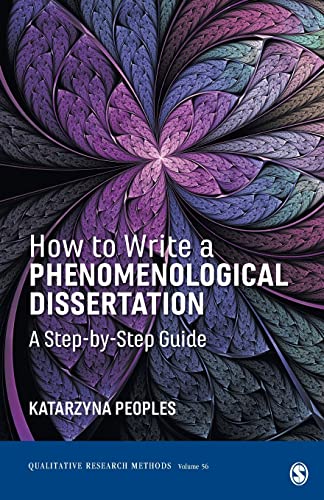How to Write a Phenomenological Dissertation A Step-by-Step Guide
Dr. Peoples studied Existential Psychology at Duquesne University (Pittsburgh, PA) and earned both her Bachelor’s and her Master’s in Psychology at Duquesne University before moving over to earn her Doctorate in Counseling Psychology at Duquesne University. She started working in the addictions field in 1999 and shortly after started relationship and marriage counseling simultaneously. Dr. Peoples currently works as a core faculty member in the Counselor Education and Supervision Doctoral program at Walden University. She has written books, book chapters, and journal articles on numerous topics related to counseling, teaching, and philosophy. Dr. Peoples also has an online marriage counseling and coaching practice where she offers virtual counseling. ... Read more Read less
Conducting phenomenological research for dissertations can be an involved and challenging process, and writing it up is often the most challenging part. How to Write a Phenomenological Dissertation gives students practical, applied advice on how to structure and develop each chapter of the dissertation specifically for phenomenological research. Phenomenology is about personal experience and personal experience varies from researcher to researcher. However, this variation is a big source of confusion for new researchers in the social, behavioral, or health sciences. This brief text is written in a simple, step-by-step fashion to account for this flexibility and variation while also providing structure necessary for a successful dissertation. Broken up into chapters that follow each chapter of the dissertation, this text logically addresses the various parts of phenomenological research, starting with ensuring phenomenology is the right method for your research, writing the literature review, going through methods and results sections to analysis and discussion. The author, using experience gleaned from supervising phenomenological dissertations for many years, gives time-tested advice on how structure the dissertation to fit into more common frameworks, using checklists and tables throughout. Each chapter includes a list of helpful resources for students to use alongside this book with specific information on methods and research. Unique to this text is a chapter on creating your own phenomenological method which allows students to expand their viewpoints and experiment in future studies after the dissertation. ... Read more Read less











